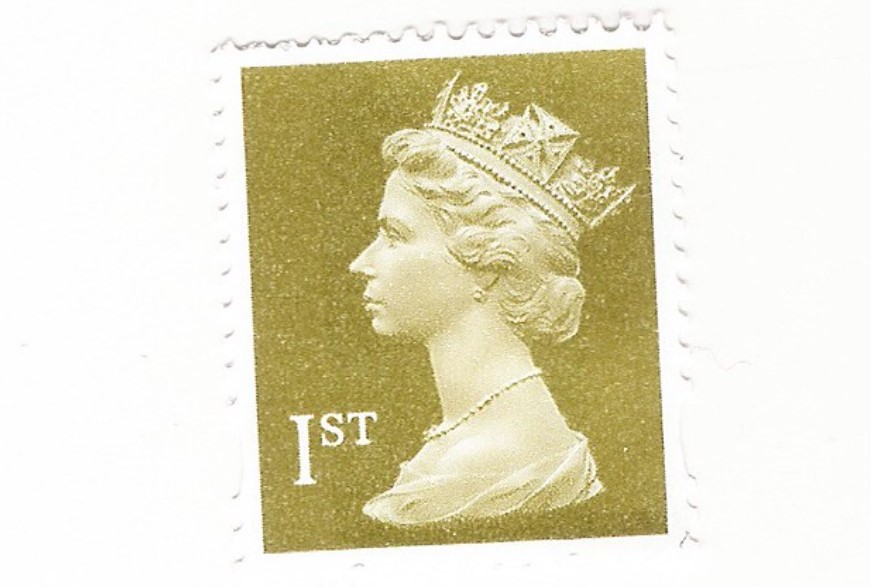Sending letters will become more costly from April in the UK. Royal Mail has recently announced that the price of first and second-class stamps will rise by 16% and 10% respectively. This is the second time since the start of the pandemic that Royal Mail decided to increase the price of the stamps. So, if you are going to send letters, you should know how much you currently require and how much you will require from April to spend on stamps. Furthermore, we will explain the usages and costs of two different stamps and offer other crucial information.
Royal Mail Announcement and Price Rise:
Royal Mail has recently announced that the price of first and second-class stamps will increase from 3 April (Monday) 2023. The delivery company stated that the price of a first class stamp will go up by 15p (16%)to reach £1.10, whereas, the cost of a second-class stamp will also rise by 7p (10%) to reach 75p. It’s just a year ago when the company increased the first class stamp price by 10p to 95p and the second-class stamp price by 2p to 68p.
How Much Is a First Class Stamp?
A first class stamp gives you the most expensive and fastest option for sending a letter or an item. When you choose this option, Royal Mail will take one to two working days to send your item to the destination.
For a standard letter with maximum dimensions of 24cm x 16.5cm x 5mm and weighing up to 100g, the current price of a first class stamp is 95p. However, a first class stamp will cost £1.10 from Monday 3rd April.
If your item is bigger than a standard letter, then you have to pay a higher cost for the stamp.
How to Buy a First Class Stamp?
You can buy either a first class stamp from a Post Office counter or a set of different stamps from Royal Mail. The current cost of a set of eight stamps is £7.60. Buying a set of stamps was cheaper earlier compared to buying a stamp individually. However, now, there is no difference in price, you can only save effort and time by buying a set of multiple stamps.
Items to Send with a First Class Stamp
For any item that weighs below 20 kg, you can send that through Royal Mail. If you are going to send a parcel that weighs above 20 kg, you have to use other parcel service options. The cost of the first class stamp varies size and weight of your parcel. Take a look at the following table to know how much is a first class stamp for different items.
| Sending Item | First Class Stamp |
| Current Price (Standard Letter) | 95p |
| Price from 3 April(Standard Letter) | £1.10 |
| Larger Letters (Up to 100g) | £1.45 |
| Larger Letters (100gto250g) | £2.05 |
| Larger Letters (250g to 500g) | £2.65 |
| Larger Letters (500g to750g) | £3.30 |
| Small Parcel (Up to 2Kg) | £4.45 |
| Medium Parcel (Up to 2kg) | £6.95 |
| Parcels (Up to 10 kg) | £7.95 |
| Parcels (Up to 20 kg) | £12.95 |
How Much Is a Second-Class Stamp?
Even though a second-class stamp is cheaper compared to a first class stamp, it will take a longer time to send your item to the destination. In most cases, a second-class item arrives at the destination within two to three working days, including Saturday.
For a standard letter (24cm x 16.5cm x 5mm) that weighs up to 100g, the current cost of a second-class stamp is 68p. However, this will go up to 75p from 3rd April. If you are going to send other items, then look at the following table to know the price of a second-class stamp for different items.
| Sending Item | Second-Class Stamp |
| Current Price (Standard Letter) | 68p |
| Price from 3 April(Standard Letter) | 75p |
| Larger Letters (Up to 100g) | £1.05 |
| Larger Letters (100gto250g) | £1.65 |
| Larger Letters (250g to 500g) | £2.15 |
| Larger Letters (500g to750g) | £2.70 |
| Small Parcel (Up to 2Kg) | £3.35 |
| Medium Parcel (Up to 2kg) | £5.35 |
| Parcels (Up to 10 kg) | £6.95 |
| Parcels (Up to 20 kg) | £10.45 |
Why the Stamp Prices Are Going Up?
This is probably the worst time to rise the stamp prices when people are already going through the cost-of-living crisis. On the other hand, Royal Mail stated that the rise in the stamp price was necessary to maintain sustainability and safeguard the universal service. Therefore, this price rise is to maintain the same delivery price irrespective of the distance. However, because of the price rise decision, the number of letters has declined by 25% since the pandemic.
It was 2013 when the 507-year-old postal delivery business became private. Royal Mail is fighting significant financial losses due to repeated strikes by the Communication Workers Union (CWU) over working conditions and pay. This delivery company also faced a cyber-attack this year. For these reasons, Royal Mail is more likely to face an operating loss of approximately £450m this year and that could be the major reason behind the price hike of stamps.
Who to Blame for the Price Rise?
Last year, Royal Mail blamed the pandemic, rising costs, and falling letter volumes for the price rise. Similarly, this year, the firm stated that the prices of the stamps were rising because “customer behaviors change”. The delivery firm has also requested the government to change the statutory requirement of six delivery days to five delivery days. Royal Mail also claimed that the price rise will keep its operation sustainable and cover the inflation in the operating costs.
On the other hand, according to Citizen Advice, 6.2 million people have missed their vital letters, including health appointment letters, while 60% of UK adults suffered from post-delays last Christmas. The most current quality of service report of Royal Mail disclosed that the firm only delivered 54% of first class items on time. So, Royal Mail is clearly failing to satisfy its consumers and this price hike will surely affect its relationship with its consumers. In the meantime, the share price of the firm stays below 30%, while the firm is expected to lose about £450m in this financial year.





No Comment! Be the first one.